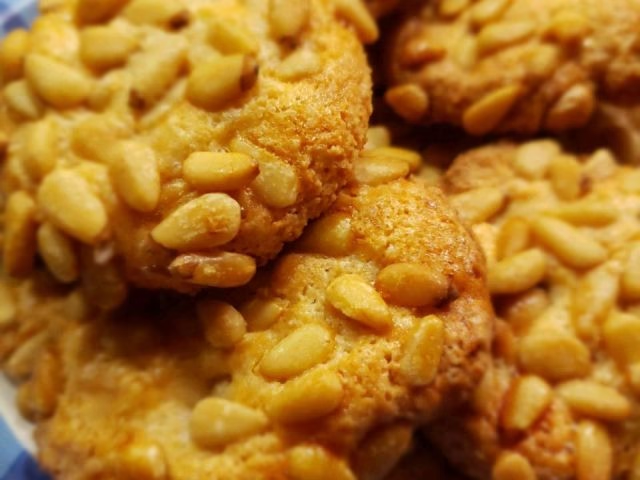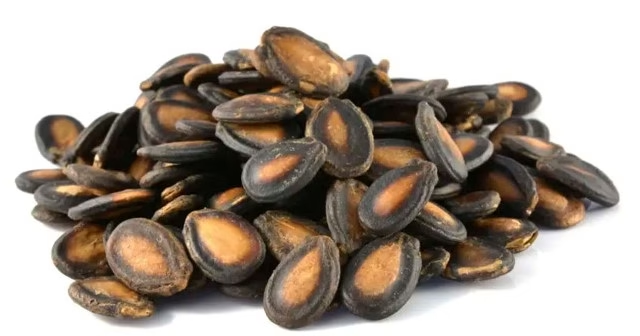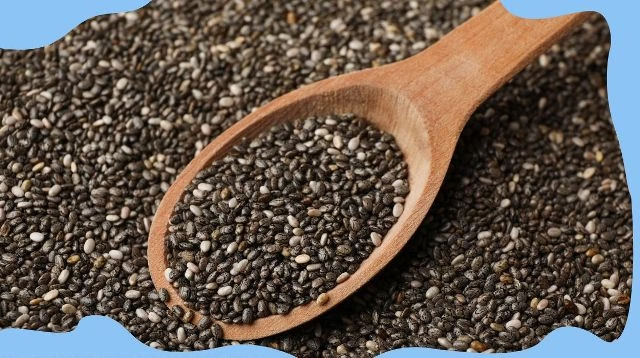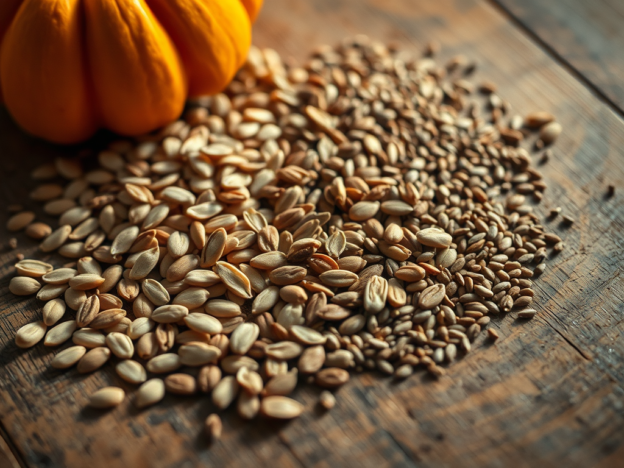
Introduction
- When it comes to healthy snacking, nuts often take center stage. But seeds, like pumpkin, sunflower and even watermelon, can be just as satisfying and pack a serious nutritional punch. Other seeds like chia, flax and sesame, which are perfect for sprinkling onto dishes, are loaded with nutrients that support heart health, digestion and the immune system and keep you feeling fuller for longer. Here’s a look at eight of the best seeds to snack on and how to easily add them to your eating plan.
- Pumpkin, sunflower, cumin, hemp, flax and chia seeds are loaded with fiber and protein.
Pumpkin seeds
- If you’re carving pumpkins this fall, don’t discard the seeds! Just 1 ounce (2-3 tablespoons) provides more than 35% of an adult’s daily magnesium needs and 8.5 grams of protein. Magnesium plays a key role in reducing the risk of heart disease, regulating blood pressure and supporting strong bones, while low levels are linked to a higher risk of osteoporosis and bone fractures. Pumpkin seeds are also rich in Tryptophan, an essential amino acid that helps produce mood-boosting serotonin and sleep-enhancing melatonin.
- You can enjoy pumpkin seeds raw, with or without the shell (though the shell has more fiber), or roast them with savory or sweet flavors for a tasty snack. They’re perfect in trail mix and granola, baked into muffins or as a garnish for salads, grain bowls and soups, adding both crunch and protein.
Pine nuts
- Though often referred to as a nut, pine nuts are actually seeds. A 1 ounce serving packs about 4.5 grams of protein, 15% of the daily adult needs for magnesium and zinc and more than 21% of an adult’s daily needs for the mineral phosphorus. Pine nuts are also high in healthy unsaturated fats, including pinolenic acid, which research suggests may help reduce inflammation, blood pressure and cholesterol levels.
- Beyond pesto, pine nuts are a great snack on their own. Try adding them to pasta or sprinkle them over roasted vegetables and salads for extra texture and nutrition. For a sweet treat, enjoy pingoli, which are traditional Italian cookies made from almond paste and egg whites and coated in pine nuts.

Sunflower seeds
- Sunflower seeds are rich in antioxidants, offering more than 10 milligrams of vitamin E per ounce, or nearly two-thirds of an adult’s daily requirement.
- Vitamin E has been linked to a reduced risk of heart disease and may help reduce plaque buildup in arteries. Each serving also provides 5.4 grams of protein, 2 grams of fiber and healthy fats like conjugated linoleic acid (CLA) and oleic acid. CLA has antioxidant and anticancer properties, as well as the potential to help lower blood pressure.
- Oleic acid may help reduce heart attack risk, lower triglyceride and LDL (bad) cholesterol and raise HDL (good) cholesterol.
- Unlike pumpkin seeds, sunflower seeds aren’t eaten with the shell. They’re a fantastic addition to breakfast favorites like yogurt or cereal, boosting protein, healthy fats and fiber. For a fun twist, use sunflower seeds instead of pine nuts to make pesto. If you’re allergic to or not a fan of nut butters, sunflower seed butter is a tasty alternative.
Watermelon seeds

- Watermelon seeds are often tossed aside, but they’re actually a hidden nutritional gem. Just 1 ounce of dried watermelon seeds delivers 8 grams of protein along with iron, magnesium, phosphorus and zinc.
- One serving provides almost 3 milligrams of zinc, about 36% of the daily recommendation for women and 26% for men. Zinc is known to support a strong immune system, helping to fend off colds and potentially shorten the duration of illness.
- Both black and white watermelon seeds are nutritious and safe to eat. They can be roasted just like pumpkin seeds and make a delicious garnish for dishes like salads, stews and soups.
Hemp seeds
- Hemp seeds, or hemp hearts, pack 9.5 grams of protein per ounce, making them the highest-protein seed.
- They’re also a complete protein, providing all nine essential amino acids. Hemp seeds are rich in other key nutrients, such as potassium, zinc and iron, and meet about 71% of an adult’s daily phosphorus needs, along with 70% of the daily magnesium requirement for women and 53% for men.
- What sets hemp seeds apart is their fat content. They’re loaded with polyunsaturated fats, maintaining an ideal balance of omega-6 to omega-3 fatty acids (roughly a 3:1 ratio), which supports heart health and reduces inflammation.
- Thanks to their mild, nearly neutral taste, hemp seeds blend seamlessly into a variety of dishes. Toss them into smoothies, mix them into muffin or pancake batter or sprinkle them over your morning oats.

- You can even add them to sandwiches for an extra nutritional boost without changing the flavor.
Flaxseeds
- Flaxseeds stand out for high amounts of alpha-linolenic acid (ALA), a plant-based omega-3 fatty acid that may help lower blood pressure and reduce the risk of heart attacks and strokes.
- Flaxseeds have also been widely studied for their potential to lower blood sugar in those with prediabetes and type 2 diabetes, reduce cholesterol, support digestive health and even ease menopausal symptoms like hot flashes.
- Plus, just 1 ounce of whole flaxseeds boasts 5.2 grams of protein and 7.8 grams of fiber, meeting over a third of the daily fiber needed for women and a fifth for men.
- To maximize nutrient absorption, grind flaxseeds before consuming, as whole flaxseeds aren’t always fully digested. They’re easy to add to your smoothies, oatmeal and yogurt, or mix into pancake batter. They also work well in muffins, breads, sauces and spreads, adding a touch of nutty flavor.
Chia seeds

- If you’re looking to increase your intake of fiber —
- something that more than 95% of American adults aren’t getting enough of — consider adding chia seeds to your diet.
- A 1-ounce serving provides 9.8 grams of fiber, covering 39% of the daily recommendation for women and 26% for men. Fiber aids digestion, reduces inflammation, helps manage blood sugar and cholesterol levels and lowers the risk for certain cancers, including colon cancer.
- Like hemp seeds, chia seeds are also a complete protein and rich in ALA and antioxidants.
- Chia seeds have a mild flavor, so they likely won’t alter the taste of your food. Enjoy chia seed pudding for a nutritious breakfast, snack or even dessert, or sprinkle chia seeds over cereal or yogurt. You can also blend them into smoothies or soak them in a glass of water for a fiber-rich drink. They create a gel-like texture when mixed with liquid.
Sesame seeds
- Small but mighty, just 1 ounce of sesame seeds provides nearly 5 grams of protein and more than 3 grams of fiber. They also contain sesamin, a plant compound known as a lignan that has antioxidant, anti-inflammatory and anticancer properties. Sesamin may even help lower cholesterol levels by reducing the body’s production of fats.
- Both black and white sesame seeds are great in grain bowls and seafood dishes — think sushi or poke bowls. They also work wonderfully in baked goods like muffins, breads and cookies. Sesame paste better known as tahini, is creamy and nutty in flavor, making it perfect for dips and dressings or for drizzling over roasted vegetables.
Cumin Seeds
- If you experiment with cuisines in the kitchen, you’ll be familiar with the humble cumin seed.
- The spice is used in everything from Mexican to Indian and Middle Eastern cooking but provides the body with more than a punchy flavor.
- Cumin seeds are noted for their powerful digestive abilities, as the oils present in the seed can stimulate the secretion of pancreatic enzymes –crucial for proper digestion and nutrient absorption.
- Additionally, research is currently underway to consider cumin’s anticancer properties – due to the seed’s free-radical scavenging tendencies. The health benefits of cumin have been noted for centuries, where Ancient Greek and Roman kitchens began by using the spice as a cheaper alternative to black pepper.
Potential Risks of Eating Seeds
- Doctors once believed that eating seeds could lead to diverticulitis, an infection of diverticula (pouchlike structures that sometimes form in the muscular wall of the colon and bulge outward). However, the link between diverticulitis and seed consumption is unproven.
Regularly eating nuts, seeds, corn, and similar foods does not increase the risk of diverticulitis.The American Gastroenterological Association (AGA) states that nut, corn, and popcorn consumption is not associated with an increased risk of diverticulitis. This is supported by a prospective cohort study published in JAMA, which found no association between the consumption of nuts, corn, or popcorn and the incidence of diverticulitis or diverticular complications. Additionally, a recent prospective cohort study in women also concluded that the intake of peanuts, nuts, and seeds was not associated with incident diverticulitis.Therefore, the long-standing recommendation to avoid these foods to prevent diverticulitis should be reconsidered, as current evidence does not support this dietary restriction. In fact, seeds are rich in fiber, which is crucial for gut health.
- Seeds are a healthy and safe choice for most people but should be avoided by those who are allergic to seeds.
- Additionally, people who aren’t used to eating fiber-rich foods may experience bloating and gas after consuming fibrous foods, like seeds.
- If your diet is currently low in fiber, it’s recommended to slowly increase your intake of fiber-rich foods to reduce the risk of gastrointestinal side effects.
What does the Heart Foundation recommend?
- The recommendations around nuts and seeds are to be included within the context of an overall heart-healthy dietary pattern.
- The Heart Foundation’s dietary pattern for heart health includes:
- eating more vegetables and fruit
- swapping from refined cereals and grains to whole grains
- choosing reduced-fat varieties of dairy products
- eating healthy fats sourced from nuts, seeds, plant oils (other than coconut and palm), avocado, and oily fish in place of animal fats
- focusing on reducing unprocessed red meat to <350g/week (cooked) spread across 3 meals per week (with an individual portion size of 100g cooked red meat)
- swapping some red meat meals for plant proteins such as soy, legumes and nuts
- limiting, or avoiding processed red meat
- reducing highly processed and refined foods such as junk food, takeaways, deep-fried foods, pastries, pies, sweet bakery items, lollies, processed snack foods and sugary drinks.
A Quick Review
- Seeds, like chia seeds, pumpkin seeds, and hemp seeds, are high in nutrients that are important to overall health such as fiber, protein, healthy fats, vitamins, and minerals.
- Not only can eating seeds help you meet your daily nutrition needs, but studies show that seed-rich diets may lower heart disease risk factors like high blood pressure and cholesterol levels, support digestive health, and improve blood sugar control.
- Try incorporating the seeds listed above into your diet for an easy and delicious way to improve your health.
The Bottom Line
- Seeds are a simple and nutritious way to add protein, healthy fats, fiber and essential vitamins and minerals to your diet. Whether you’re sprinkling them on your salads, blending them into smoothies or enjoying them on their own, these nutrient-packed seeds can support your health in many ways. Next time you’re reaching for a snack, don’t forget about these powerful little seeds.
References:
1.https://fdc.nal.usda.gov/fdc-app.html#/food-details/2515380/nutrients
2.https://pmc.ncbi.nlm.nih.gov/articles/PMC8313472/
3.https://www.ncbi.nlm.nih.gov/pmc/articles/PMC9182978/
4.https://fdc.nal.usda.gov/fdc-app.html#/food-details/2346392/nutrients
5.https://nutritionsource.hsph.harvard.edu/phosphorus/
6.https://pmc.ncbi.nlm.nih.gov/articles/PMC9861571/
7..https://www.allrecipes.com/recipe/10022/pignoli-cookies-i/
8.https://fdc.nal.usda.gov/fdc-app.html#/food-details/170562/nutrients
9.https://pubmed.ncbi.nlm.nih.gov/35667272/
11.https://pmc.ncbi.nlm.nih.gov/articles/PMC6567199/
12.https://fdc.nal.usda.gov/fdc-app.html#/food-details/169414/nutrients
14.https://fdc.nal.usda.gov/fdc-app.html#/food-details/170554/nutrients
15.https://www.bucketlisttummy.com/tropical-banana-chia-pudding/
16.https://www.healthline.com/nutrition/chia-seeds-in-water-benefits
17.https://fdc.nal.usda.gov/fdc-app.html#/food-details/170150/nutrients
18.https://pubmed.ncbi.nlm.nih.gov/32750369/


Thank you for your sharing. I am worried that I lack creative ideas. It is your article that makes me full of hope. Thank you. But, I have a question, can you help me?
Thanks for sharing. I read many of your blog posts, cool, your blog is very good.
Your point of view caught my eye and was very interesting. Thanks. I have a question for you.
Your article helped me a lot, is there any more related content? Thanks!
Thank you for your sharing. I am worried that I lack creative ideas. It is your article that makes me full of hope. Thank you. But, I have a question, can you help me?
Your article helped me a lot, is there any more related content? Thanks!
Your point of view caught my eye and was very interesting. Thanks. I have a question for you.
Can you be more specific about the content of your article? After reading it, I still have some doubts. Hope you can help me.
Your point of view caught my eye and was very interesting. Thanks. I have a question for you.
I don’t think the title of your article matches the content lol. Just kidding, mainly because I had some doubts after reading the article.
Thanks for sharing. I read many of your blog posts, cool, your blog is very good.
Can you be more specific about the content of your article? After reading it, I still have some doubts. Hope you can help me.
Your article helped me a lot, is there any more related content? Thanks!
Thanks for sharing. I read many of your blog posts, cool, your blog is very good.
Your article helped me a lot, is there any more related content? Thanks!
Thank you for your sharing. I am worried that I lack creative ideas. It is your article that makes me full of hope. Thank you. But, I have a question, can you help me?
Can you be more specific about the content of your article? After reading it, I still have some doubts. Hope you can help me.
Your point of view caught my eye and was very interesting. Thanks. I have a question for you.
Your point of view caught my eye and was very interesting. Thanks. I have a question for you.
Thank you for your sharing. I am worried that I lack creative ideas. It is your article that makes me full of hope. Thank you. But, I have a question, can you help me?
Your point of view caught my eye and was very interesting. Thanks. I have a question for you.
I don’t think the title of your article matches the content lol. Just kidding, mainly because I had some doubts after reading the article.
Your article helped me a lot, is there any more related content? Thanks!
Your point of view caught my eye and was very interesting. Thanks. I have a question for you.
Thanks for sharing. I read many of your blog posts, cool, your blog is very good.
Your article helped me a lot, is there any more related content? Thanks!
Thank you for your sharing. I am worried that I lack creative ideas. It is your article that makes me full of hope. Thank you. But, I have a question, can you help me?
Can you be more specific about the content of your article? After reading it, I still have some doubts. Hope you can help me.
Thanks for sharing. I read many of your blog posts, cool, your blog is very good.
Your article helped me a lot, is there any more related content? Thanks!